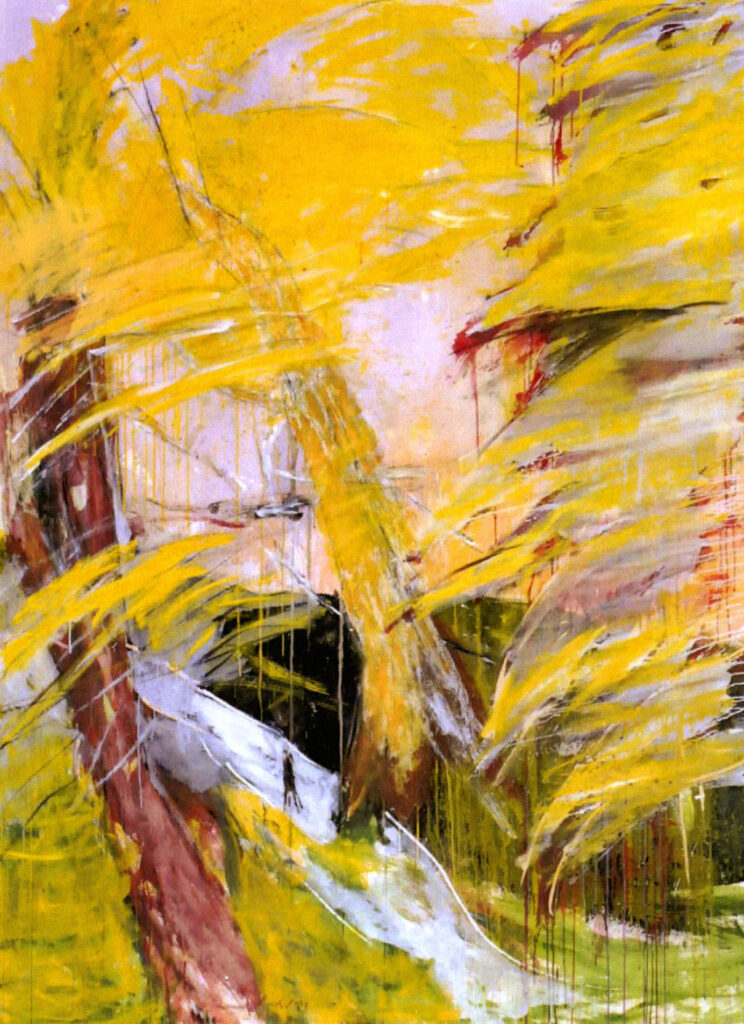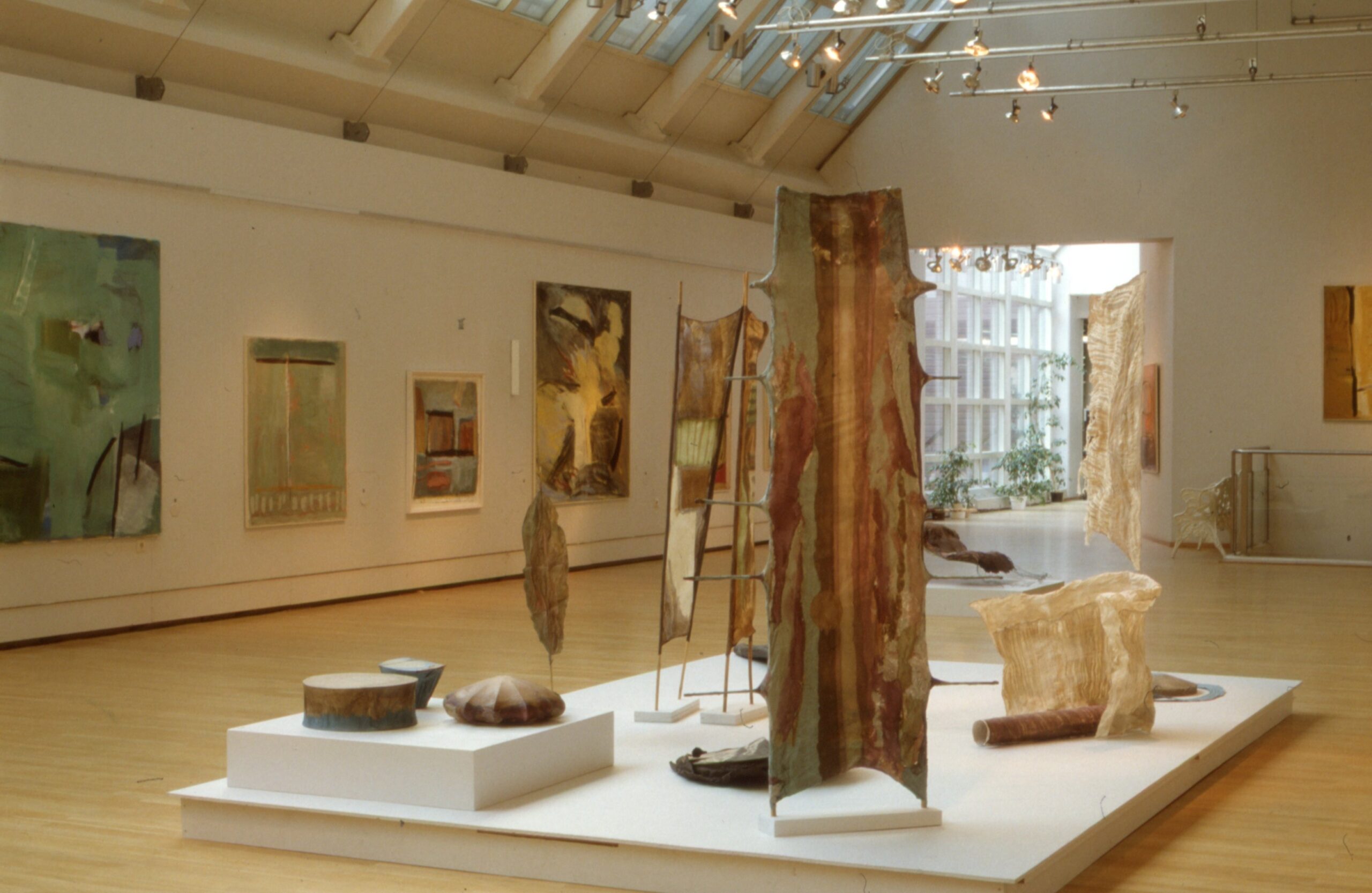


The common denominator for the exhibition was that the three contemporary and well-established artists were of the same generation (born around World War II), had a connection to Södertälje and were members of the Södertälje konstnärskrets (artists organization in Södertälje).
Gerd Kern was for many years the director of the graphics workshop in Södertälje. In the exhibition, she showed a variety of graphic techniques. She adopted the ancient origami technique from Japanese art. But even the mood and the stripped-down elegance of her sparse graphic leaves had something Japanese and meditative about them. The way to approach nature could be done with great care. Everything superfluous or insignificant was chosen away, often in favor of a symbolically charged simplicity. Some reeds with swaying tops, a solitary sloping tree on a grassy plain, a few cavities in the foliage, like vulvae, a few luminous fruits. Sometimes tighter architectural forms, machine parts, often with humorous elements, like a water pump with a feather in the hat. Passages and passages on the way to another world. She often worked with copper graphics, such as aquatint etchings in both black and white and color.
Kerstin Svanberg previously worked as a researcher and chemist before she re-saddled to become a textile artist. Later, she has primarily become known through her passion as a creator of paper art. She learned how to make paper in Spain, and in the United States she came into contact with advanced paper art. “Her work is often built on a framework that provides a structure: this can be both the hexaeders of the molecules and the cellwork, ratio and imagination of the social building or geometry and organism in harmony or conflict. The shape is also added at the same time as the color in the softly mouldable and absorbent pulp on the vacuum table, which is then dried to a taut and transparent membrane. ” For many years, Kerstin has been active in the exchange between Japanese artists and Södertälje’s group of artists. She has had several exhibitions in Japan, her second artistic home, and written the book PAPER-MY DESTINY
Mia Jarnsjö started as a light and thin watercolor artist in the 70s, in the 80s she switched to a painting with more harsh and stripped-down landscapes. At the art gallery in 1990, there is another new phase of painting, with more dissolved forms that meet the audience. The colors are higher and more saturated, the format is getting bigger. She increasingly relies on her feelings, the inner reality intrudes in an increased realization that it is this more abstract reality that is hers, rather than the outer concrete. Technology is temperate. ” An intuitive painting.
A.K. sources: folder Gerd Kern Graphic quote: Per Drougge, folder Kerstin Svanberg Paper Kerstin Svanberg PAPER-MY DESTINY, folder Mia Jarnsjö Painting quote: Torbjörn Åhs